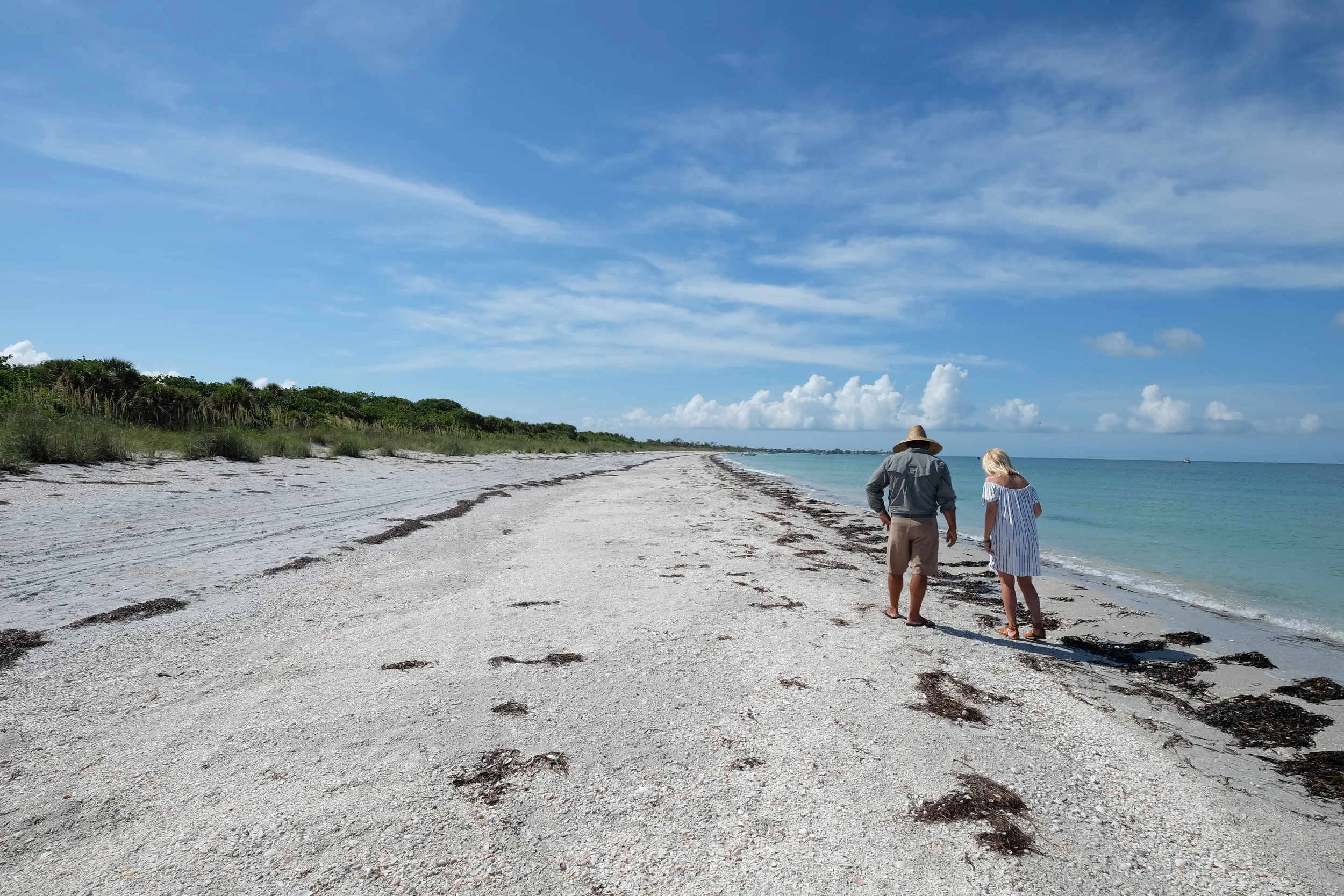We both love the ocean. Growing up in Southern California, time spent at the shoreline revolved around tanning, napping, surfing, or swimming. Occasionally, while walking along the sand you may find a cool seashell that catches your eye and take it home. But here in Southern California, “shelling” is not an activity that we have heard of.
We recently learned that in other parts of the country, “shelling” is a thing. It is what it sounds like… combing the beaches for seashells of various shapes and sizes. Certain parts of the world are much better for shelling than others… like the Island of Sanibel in southwest Florida. So much so that Sanibel is the “Shellebration” location for National Seashell Day on June 20!
We were able to explore Sanibel Island by boat with Captain Brian of Captiva Cruises, and Marine Biologist Stefanie from the Bailey-Matthews National Shell Museum. During our journey we learned why Sanibel really is one of the greatest places to find amazing shells. One reason is that Sanibel is a barrier island, which makes it a plateau that acts as a shelf for seashells. To put it in perspective, 80 miles off of Sanibel the ocean is only 600 feet deep! On top of that, Sanibel also has a hook-like shape, which traps the shells traveling along the north-flowing Gulf Stream. All that to say, there are a lot of shells on the Sanibel shores.
During our time on Sanibel we also learned about shells themshellves (hehe), not just how they arrived on the island. Did you know that every shell is made by a live animal? Shells are the left-behind external skeletons formed by mollusks. As mollusks grow, they secrete calcium carbonate, which hardens outside their bodies and forms the shell. As they grow, the shell grows too. There are more than 300 identified species of mollusks around Sanibel, each that produces a different type of shell! This is another reason why there are so many shells on Sanibel’s shores. Shellers are free to come and scan the beaches for their favorites, as long as the mollusk is no longer living. This is pretty easy to tell, because most likely the shell is empty. If you want to learn more about these little creatures, tune in to #WildlifeWednesday on Facebook with Captain Brian!
We had a couple shelling sessions (try to say that fast) on both Sanibel and Captiva Islands (another shelling hotbed). It’s definitely addicting and challenging to try and spot various shells in the sand. We recommend you call Captain Brian, because he will take you to the best beaches and will help you spot some beautiful shells. While scouring the beaches, we learned of “The Sanibel Six”. These are six sea shells you should try to find during a vacation on Sanibel. They are the Horse Conch, the Banded Tulip, Alphabet Cone, Lightning Whelk, Lettered Olive, and the Apple Murex. We found two! The Lightning Whelk and the Lettered Olive. We also learned of the prized Junonia, a beautiful brown-spotted shell that are in deep water and rarely wash up on the beaches. Our goal is to spend more time on Sanibel in the near future and find one!
While we do not have the same caliber of shelling in California, we have already combed our home beaches in search of shells with our new knowledge. It’s not quite the same as on Sanibel, but it is a fun new hobby! Thank you Sanibel and Captain Brian, we can’t wait to come back!
Thank you to The Beaches of Fort Myers & Sanibel for sponsoring this post!

